Has your plastic cutting board seen better days? Learn how to remove stains from plastic cutting boards with hydrogen peroxide, baking soda, and dishwashing detergent. Easy, green cleaning tutorial.
I have a white plastic cutting board that I use for cutting meat and poultry. It’s easy to store and can be popped into the dishwasher for easy clean-up and disinfection.
The downside to plastic cutting boards… they seem to become discolored or stained after just a few months (or weeks) of use.
Oh, how I hate those icky brown stains that cannot be scrubbed away!
Luckily, I’ve discovered two easy ways to get stains off plastic cutting boards, no bleach needed!
How to Remove Stains from Plastic Cutting Boards
There are two easy ways to remove stains from cutting boards:
- Hydrogen peroxide soak.
- Baking soda, hydrogen peroxide, and dish detergent paste.
 How to use hydrogen peroxide to remove cutting board stains
How to use hydrogen peroxide to remove cutting board stains
Plain old 3% hydrogen peroxide will bleach away cutting board stains if given enough dwell time.
- Lay the cutting board in a sink.
- Spray or pour hydrogen peroxide over the cutting board until it is wet.
- Allow the hydrogen peroxide to soak for several hours or overnight. (You should see the stain lighten considerably.)
- Wash the cutting board with detergent and water, allow to dry.
Why this method works: Hydrogen peroxide is a natural bleaching agent that brightens surfaces and kills bacteria. Giving the hydrogen peroxide several hours to work on the stain is key.
 How to use baking soda, hydrogen peroxide, and detergent to remove cutting board stains
How to use baking soda, hydrogen peroxide, and detergent to remove cutting board stains
Mixing hydrogen peroxide with dish detergent and baking soda makes an easy to apply paste that bleaches away cutting board stains.
- Make a paste from 3-4 tablespoons of baking soda, 1 tablespoon of dish detergent, and 1-2 tablespoons of hydrogen peroxide. The mixture should be easily spreadable but not soupy.
- Spread the cleaner all over one side of the cutting board and allow to sit for several hours or overnight
- Wipe or rub off the cleaner, wash the cutting board with detergent and water, and allow to dry.
Why this method works:
- Hydrogen peroxide is an effective bleaching agent that bleaches stains, brightens surfaces, and kills bacteria.
- Dish soap cuts through any greasy residue left on the cutting board.
- Baking soda is a natural abrasive that helps to break down food stains. (I also use it to clean my oven!)
- The thick mixture keeps the cleaning agents in place on the cutting board long enough to remove the cutting board stains.
Why You Should Clean Plastic Cutting Boards Without Bleach
Many people use bleach to clean plastic cutting boards. They choose bleach because it is good at removing stains and kills germs.
Unfortunately, cleaning with bleach can damage your health and corrode surfaces.
- Bleach is a sodium hypochlorite solution which is dangerous to inhale, irritating to the skin & eyes, and toxic to consume.
- Bleach is a strong base with a pH of around 12. Because of its high pH bleach is corrosive to materials it touches, including plastic.
- Most tutorials for removing cutting board stains with bleach use undiluted bleach. This advice goes against the manufacturers’ recommendations (Clorox recommends using just 1 tablespoon of bleach mixed with 1 gallon of water on food preparation surfaces.)
Luckily hydrogen peroxide can be used to remove plastic cutting board stains safely, without damage!
- Hydrogen peroxide is often called “oxygen bleach”. It is a great stain remover, surface brightener, and bacteria killer.
- Unlike chlorine bleach, hydrogen peroxide is not corrosive to surfaces and is non-toxic.
- After use, hydrogen peroxide naturally breaks down into oxygen and water.
How to Sanitize Plastic Cutting Boards Naturally
Plastic cutting boards are made of non-porous material that makes them safer for food preparation. However, there are some situations when you many want to sanitize your plastic cutting board (after cutting up meat, etc.)
Use one of these methods to naturally disinfect a plastic cutting board:
- Run the cutting board through the dishwasher on the hottest setting. The heating element in the dishwasher heats the water above the temperature your skin can tolerate, killing more bacteria.
- Wash the cutting board with soap and water then wipe or spray the cutting board with white vinegar. Next wipe or spray the cutting board with hydrogen peroxide. Rinse clean. This one-two punch will naturally kill bacteria lingering on the cutting board. It works as well as bleach.
Skip the bleach and store-bought cleaners for cutting board stains and try hydrogen peroxide. It’s an easy, green way to remove stains and keep your cutting boards looking great!
Like green cleaning tutorials? Sign up for my newsletter below and never miss a thing!
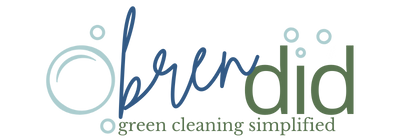

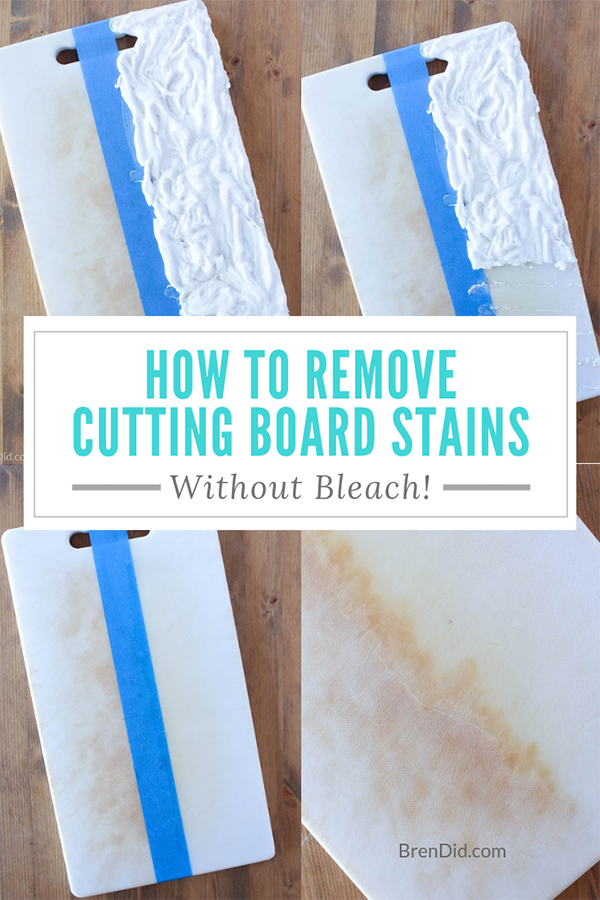
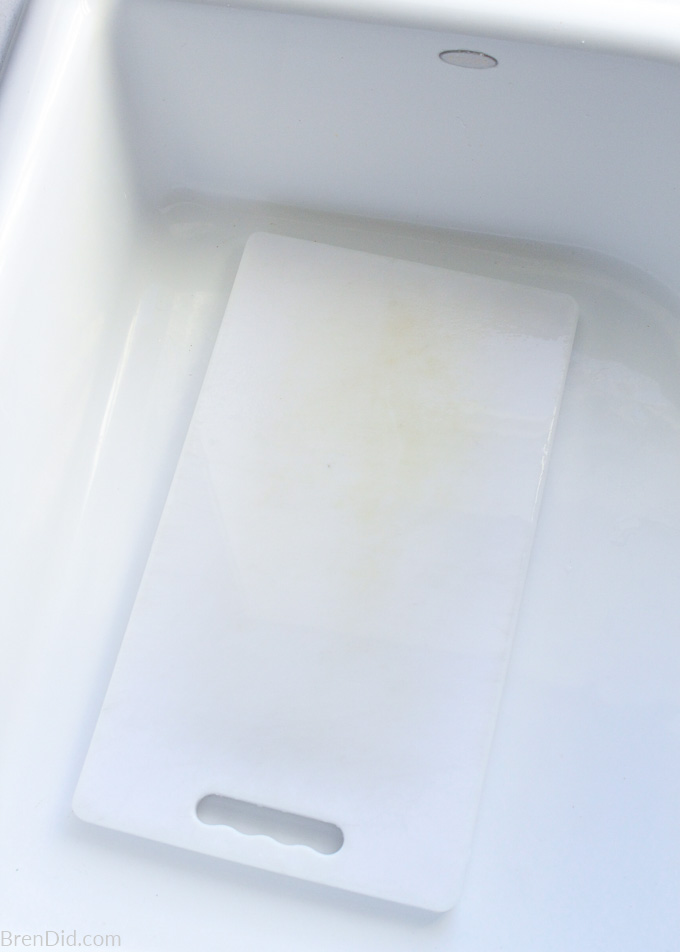 How to use hydrogen peroxide to remove cutting board stains
How to use hydrogen peroxide to remove cutting board stains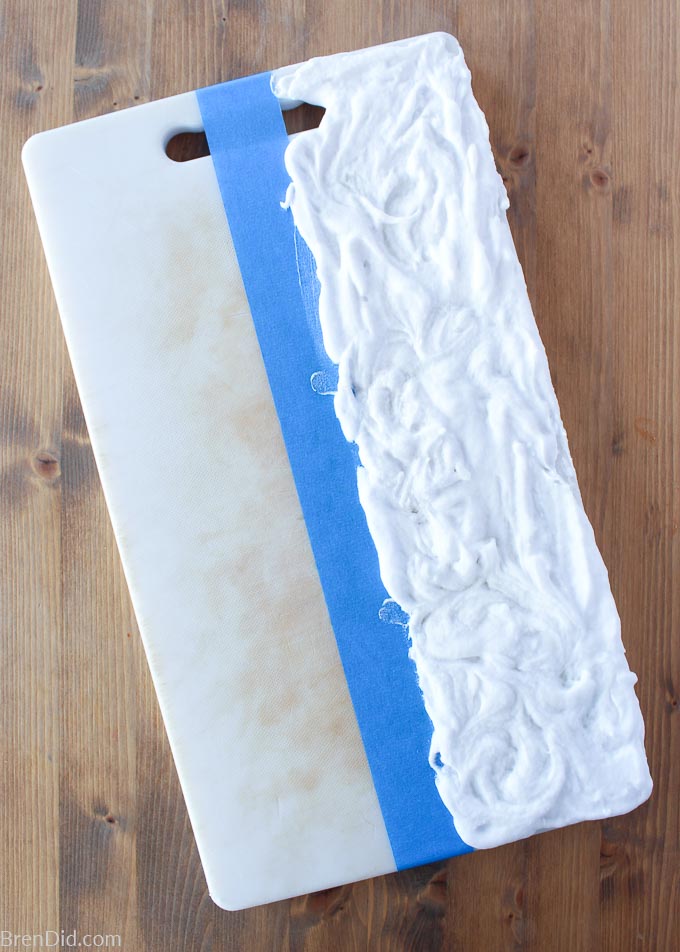 How to use baking soda, hydrogen peroxide, and detergent to remove cutting board stains
How to use baking soda, hydrogen peroxide, and detergent to remove cutting board stains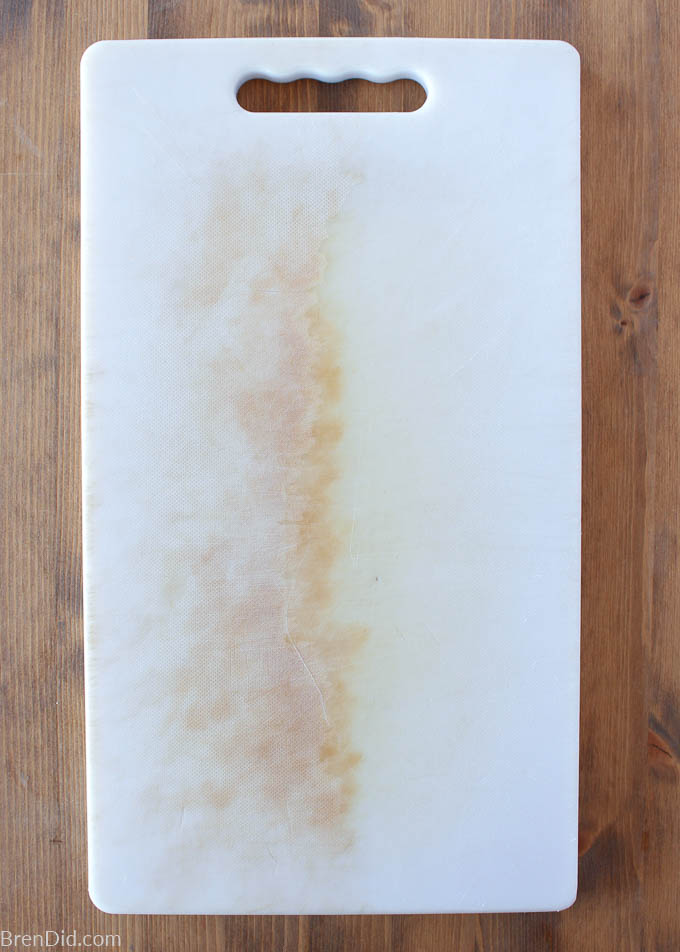

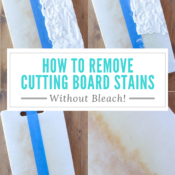
Pat
Don’t be grossed out but I’m gonna try this on my husband’s elevated toilet seat.
bw
Astonishing!!! I was very sceptical, but your technique of soda, peroxide, dish soap completely got rid of dark cutting board stains in 4-5 hours. Now using this on other items (eg, plastic/rubber electric toothbrush that has dark spots. Being a paste, allows it to really cling to the surface – even upright. Thanks so much!!
CrazyGranny
Finally! I’m delighted to learn that people are wising-up and using hydrogen peroxide to clean cutting boards! Peroxide is safe and cheap. I’ve tried for a long time to get my own daughters to use it but they insist on using bleach (too many stupid TV commercials). Granted, their boards are plastic or glass but I still hate the thought of ingesting any bleach, gag! I’ve been doing a variation of your peroxide treatment for many years, and on a wooden cutting board. Yeah, I know, we’re not supposed to use wood but I like a wooden board and I’ve never made anyone sick. The quickest and simplest way to do it is to lay an old clean towel on top of the board (folded if necessary or a piece of old bath towel cut to the size of your board) and pour some peroxide on the towel until it’s wet but not dripping. Obviously I use a towel that I don’t mind getting lightened by the peroxide. Let it sit for 10 to 20 minutes, then wring out your towel (peroxide is good for the sink drain too) spray a little liquid cleaner on the towel and wipe down your counter or an appliance, or anything else that can use it – frugal, and it works. While your board is still wet, take a blunt edge metal spatula, or an expired credit card – anything stiff and blunt to scrape the surface of the board. You’ll be AMAZED at the amount of gunk that scrapes up. Then I rinse and dry it with another clean towel or paper. When dry, I can put my nose near it and will smell absolutely nothing! And just like plastic, stains are gone too. I could use the baking soda paste if I chose to, it IS a great cleaner for lots of things, but it’s just a little messier to clean up from a wooden board and it’s not really necessary, the peroxide is enough. If I used plastic boards, I’d use your method – it’s brilliant. In addition, I choose not to use dish detergent on wood because like bleach, some of it would end up in our food. Yuck.
Great post! Thanks for doing it.
Deb
Just a heads up, I find if you take half a lemon with baking soda and rub, the stains comes out faster.
Bren
Thanks for the tip, Deb. I’ll give it a try the next time I have a spare lemon!
Sharon
I clean my oven door like that…sprinkle baking sod and use 1/2 lemon as a ‘scrubber’
Karen M Wolff
Why only half at a time?
Bren
Karen, you can do the entire cutting board at once. I did one half to show the difference in cleaning. I do one SIDE at a time so the cleaner sticks well to the side of the cutting board facing up and does not slide off the side turned down.
Dan Greenberg
No power tools required. The result is amazing.90% better and I suspect it would get even better. I used a basting brush to apply – easy, kind of fun. Like painting in kindergarten.
Linda
Thank you SOOOO much for this paste combination technique….it totally works! I have tried many other unsuccessful ways to get rid of the stains and have thrown out many ugly cutting boards over the years. Please tell us about other “magical” potions you may have discovered to correct other household problems.
Lulu
I confess I did not read all the comments nor every word of the article. However, I did not see reference to the fact that hydrogen peroxide goes bad pretty quickly after being opened. The test to see if it’s still active, from what I understand, is to pour a little in the sink and see if it fizzes.
Julie
This totally worked. My cutting boards are 90% better. Impressive
Bren
Woo hooo!
Mandy
After tinkering around with various DIY cleaning mixture a few years ago, I decided that if some combination of Blue Dawn, baking soda and hydrogen peroxide doesn’t do the trick it’s time to call in the hazmat team. I have an Instant Pot liner sitting in the kitchen right this minute with that formula working its magic on the scorched milk left over from yesterday’s yogurt making episode.
Bren
Good luck!
Aviv
Regarding soaking with hydrogen peroxide – should the sink hole be closed (not letting anything drain)?
Bren
Yes, allow the hydrogen peroxide to remain on the cutting board.
Barbara Baker
Is it safe to use the hydrogen peroxide, dish soap, and baking soda mixture on plastic such as stained Tupperware?
Bren
I have used it on stained plastic with great results. You should spot test if you are concerned.
Dana
How to clean a bathtub that
isn’t Porcelain.
Bren
I use my no scrub shower cleaner and a sponge with a non-scratch scrubber!
Liz
Nice idea with the cleaning techniques. I think you should take more care with your claims though. The tagline “natural” is a bit false. Hydrogen peroxide is a man-made chemical compound. It technically falls under the category of bleaches. It can be toxic in food-grade doses which I think should be mentioned in this article. Most food grades doses aren’t sold over the counter.
Bren
Liz, hydrogen peroxide occurs naturally in the environment. The bottles of hydrogen peroxide we purchase in stores is manufactured hydrogen peroxide that is chemically identical to the naturally occurring variety. I feel comfortable calling it “natural.” I agree, caution should be used with all substances. In all of my cleaning tutorial I specifically recommend the use of 3% “household” hydrogen peroxide, I do not recommend the use of 6 to 10 percent hair-bleaching hydrogen peroxide, 35 percent food-grade hydrogen peroxide, or 90 percent industrial hydrogen peroxide. In the United States it would be difficult to obtain hydrogen peroxide that is higher than 10%, even the food grade hydrogen peroxide sold in store is 3%. Hope this helps! -Bren
Eileen
Hi Liz,
Another trick that would help is spray or rub a little cooking type oil of your choice. This will form a protective barrier between the meat and board. Then it can be washed away with the regular washing. Board should stay stain free longer.
Cristina
Wow! Great results
Bren
Thanks, Cristina!
P
Used this on my badly stained dishwasher interior. What a godsend. Thank you.
Bren
I’m glad it helped!
Dia
How does one clean the inside glass of an oven door. Do you have to take the door apart? In the pull out drawer at the bottom of the stove there is an opening. What can be used to get between the glass on the stove door?
Bren
Dia, I would NEVER take the door apart. This would ruin the factory seal and might cause the oven to leak heat. Look at the bottom of your main oven door (I have to lay on the floor to see mine). My oven has openings that I can fit a long handled cleaning tool to clean between the two glass panels. (I have to remove the lower drawer to clean this way.)
Revathe narayan
Very nice idea thanks
Bren
Thanks!